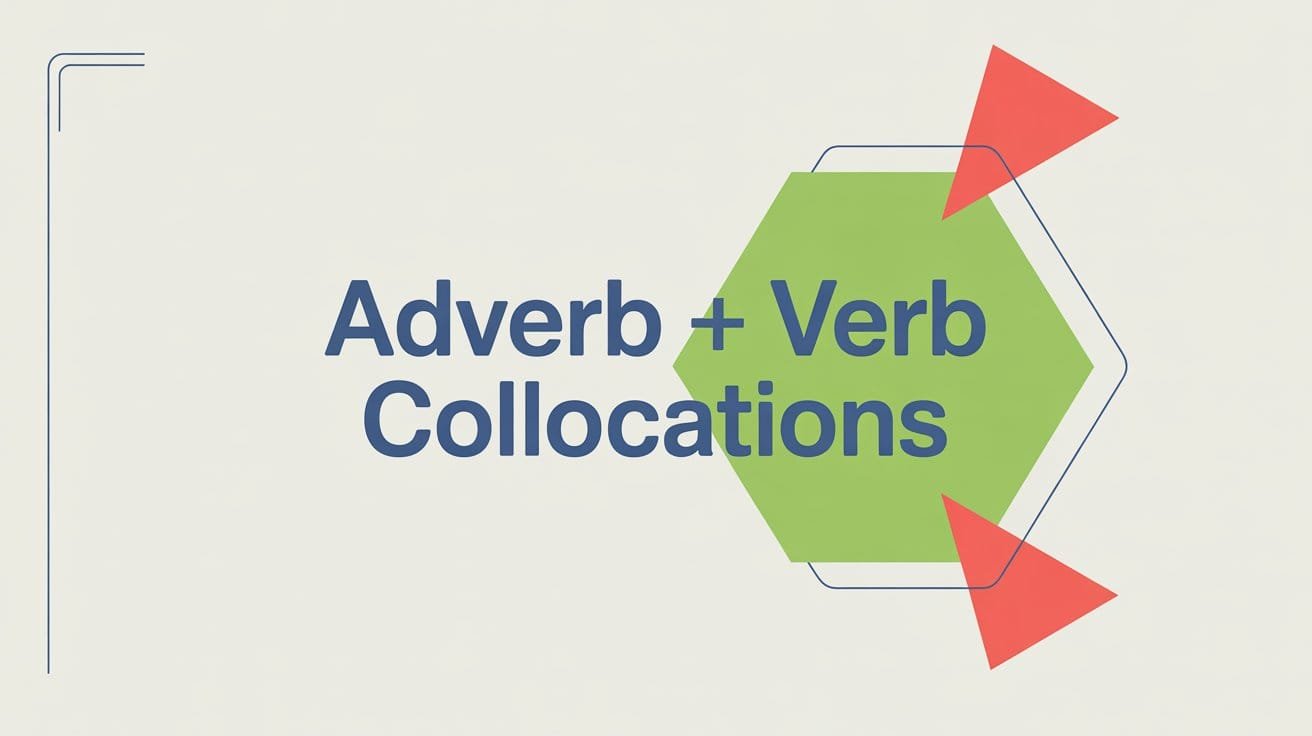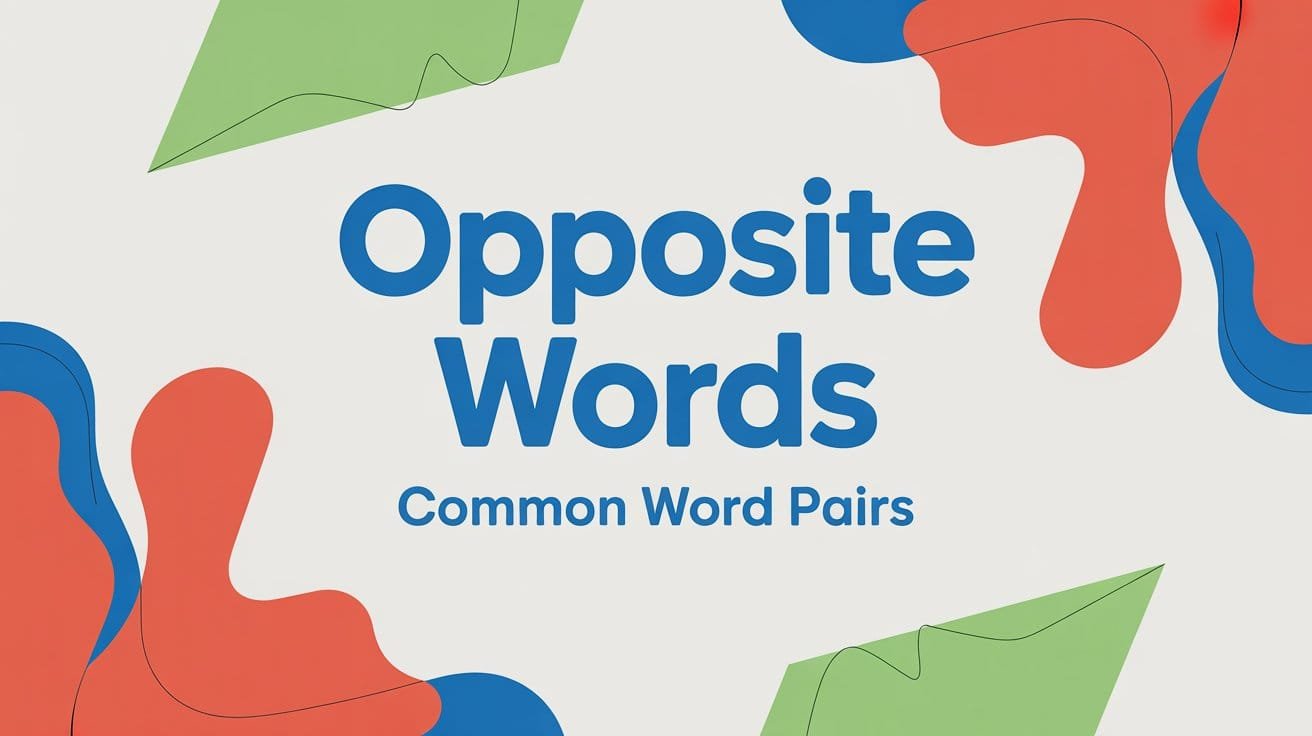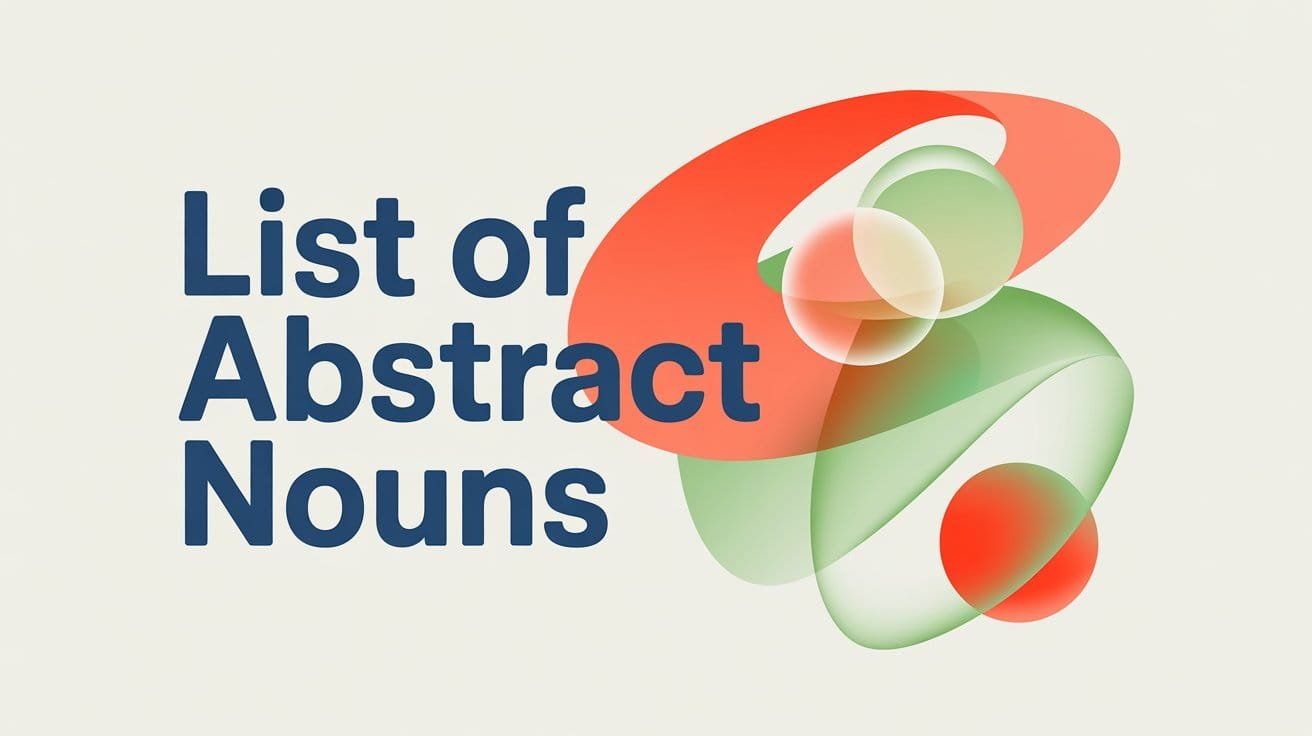Some adverbs naturally fit with certain verbs — and using the wrong one can make your sentence sound odd or unnatural. We say deeply regret, not strongly regret, and closely follow, not nearly follow. These natural pairings are called adverb + verb collocations.
They appear everywhere in English — in news, speeches, and everyday conversation. Native speakers use them instinctively to describe actions, intensity, or feelings. For example, we say fully understand, strongly recommend, or badly hurt because these combinations simply sound right.
In this guide, you’ll learn what adverb verb collocations are, see the most common examples, understand their patterns, and discover how to use them naturally in both spoken and written English.
Understanding Adverb + Verb Collocations
An adverb + verb collocation is a natural combination where a specific adverb is frequently used with a particular verb.
For example:
- strongly recommend ✅ sounds natural
- quickly recommend ❌ sounds awkward
- deeply regret ✅ is common and fluent
- greatly regret ❌ sounds slightly unnatural
Even though other adverbs are grammatically possible, only certain combinations are widely used. This preference is based on frequency and convention, not strict grammar rules.
Adverbs in collocations typically express manner, degree, or intensity. They help clarify how or to what extent an action happens. For instance:
- closely examine → shows how the action happens (manner)
- fully understand → shows how much something happens (degree)
- strongly believe → shows how firmly the speaker feels (intensity)
Because these pairings sound natural to native speakers, they’re important for learners who want their English to sound fluent and confident — not just correct.
Common Adverb + Verb Collocations (with Examples)
Adverb + verb collocations make actions sound more precise and natural. Some describe intensity (deeply regret), others describe manner (closely follow), and some show degree or completeness (fully recover).
Here are some of the most common and useful adverb + verb collocations you’ll encounter in everyday English.
1. Adverbs of Degree
These adverbs describe how much or to what extent an action happens. They often appear with verbs that express emotion, opinion, or understanding.
Examples:
- fully understand — I fully understand your concern.
- completely agree — We completely agree with your suggestion.
- entirely depend — Success entirely depends on teamwork.
- totally forget — I totally forgot about the appointment.
- greatly appreciate — We greatly appreciate your support.
- strongly recommend — I strongly recommend this book to learners.
- deeply regret — She deeply regrets what happened.
- highly value — The company highly values integrity.
- strongly oppose — They strongly oppose the new policy.
- firmly believe — I firmly believe that honesty matters.
2. Adverbs of Manner
These describe how an action is done.
Examples:
- closely follow — Students closely follow the teacher’s instructions.
- carefully examine — The doctor carefully examined the patient.
- thoroughly enjoy — They thoroughly enjoyed the concert.
- quietly leave — He quietly left the room.
- gently push — Please gently push the door to close it.
- clearly explain — The professor clearly explained the topic.
- slowly improve — Her health is slowly improving after treatment.
- easily adapt — Children easily adapt to new environments.
- quickly respond — The team quickly responded to the emergency.
- accurately measure — They accurately measured the results.
3. Adverbs of Frequency and Time
These collocations show how often or when something happens.
Examples:
- regularly visit — We regularly visit our grandparents.
- rarely see — I rarely see him these days.
- frequently use — This word is frequently used in formal writing.
- constantly remind — She constantly reminds her team about deadlines.
- always try — He always tries to do his best.
- occasionally travel — We occasionally travel abroad.
- often forget — I often forget my password.
- usually arrive — The train usually arrives on time.
- sometimes hesitate — People sometimes hesitate to ask for help.
- rarely complain — He rarely complains about anything.
4. Adverbs of Intensity and Emotion
These express strong feelings or attitudes.
Examples:
- deeply admire — I deeply admire her determination.
- sincerely hope — We sincerely hope you succeed.
- seriously consider — You should seriously consider the offer.
- strongly feel — I strongly feel that we need change.
- genuinely care — She genuinely cares about her students.
- truly appreciate — I truly appreciate your kindness.
- deeply respect — They deeply respect their elders.
- honestly believe — I honestly believe this is the right path.
- deeply move — The story deeply moved everyone in the audience.
- greatly admire — We greatly admire their courage.
5. Adverbs Used in Academic or Formal English
These collocations appear often in essays, research, and professional writing.
Examples:
- closely examine — The study closely examined the results.
- strongly support — The evidence strongly supports the theory.
- fully justify — These findings fully justify further research.
- carefully analyze — The team carefully analyzed the data.
- significantly affect — The new policy significantly affects small businesses.
- explicitly state — The report explicitly states its objectives.
- clearly demonstrate — The experiment clearly demonstrates the point.
- positively influence — Education positively influences development.
- accurately describe — The article accurately describes the issue.
- greatly improve — The program greatly improves efficiency.
Mixed or Extended Adverb + Verb Collocations
In real communication, adverb + verb collocations often appear in longer structures. They can include an object, another modifier, or even an entire clause.
Adverb + Verb + Object
Many collocations include a direct object to complete the action.
- strongly recommend this course — I strongly recommend this course for beginners.
- closely follow the instructions — Please closely follow the instructions during the exam.
- deeply regret the mistake — She deeply regrets the mistake she made.
- carefully examine the data — The scientists carefully examined the data before publishing.
- greatly admire her talent — I greatly admire her talent and dedication.
Double or Multi-Adverb Collocations
Sometimes two adverbs appear together to modify a single verb. The first shows attitude, and the second shows manner or degree.
- truly and deeply regret — He truly and deeply regrets what he said.
- firmly and publicly deny — The company firmly and publicly denied the accusation.
- strongly and consistently support — They strongly and consistently support environmental policies.
- clearly and carefully explain — The teacher clearly and carefully explained the lesson.
- honestly and openly admit — She honestly and openly admitted her mistake.
Adverb + Verb + Clause
Some collocations lead into clauses, often introduced by that, if, or when.
- firmly believe that — I firmly believe that education can change lives.
- strongly suggest that — Experts strongly suggest that we reduce screen time.
- deeply hope that — We deeply hope that peace will return soon.
- honestly think that — I honestly think that he deserves another chance.
- clearly show that — The results clearly show that the plan is working.
Extended Collocations in Context
Longer adverb + verb combinations are often part of full phrases that sound natural to native speakers.
- strongly believe in equal rights
- closely monitor the situation
- seriously consider applying for the job
- deeply appreciate your time and effort
- greatly improve the overall experience
Usage in Formal and Academic Contexts
In academic and professional English, adverb + verb collocations add precision and sophistication to your writing. They make arguments sound confident, measured, and natural. Using the right combination helps express ideas clearly without repeating the same verbs or relying on wordy explanations.
Here are some of the most frequent collocations used in formal contexts:
Academic and Research Writing
- closely examine — The study closely examines the effects of pollution on health.
- strongly support — The evidence strongly supports the proposed hypothesis.
- clearly demonstrate — The results clearly demonstrate the effectiveness of the method.
- accurately measure — Researchers accurately measured the reaction time.
- significantly affect — Economic conditions significantly affect consumer behavior.
- explicitly state — The author explicitly states the limitations of the research.
- directly compare — The paper directly compares two competing models.
- closely analyze — We closely analyzed the data for patterns.
- greatly enhance — These techniques greatly enhance communication skills.
- clearly show — The experiment clearly shows that temperature influences speed.
Business and Professional Writing
- strongly recommend — We strongly recommend reviewing the policy.
- fully understand — Clients must fully understand the terms before signing.
- closely monitor — The company closely monitors performance metrics.
- formally announce — The firm formally announced its expansion plans.
- carefully review — Please carefully review the attached report.
- deeply appreciate — We deeply appreciate your continued support.
- greatly value — The organization greatly values teamwork.
- sincerely apologize — We sincerely apologize for the inconvenience.
- successfully implement — The new strategy was successfully implemented last quarter.
- fully comply — All employees must fully comply with safety regulations.
Academic Discussion and Evaluation
- firmly believe — We firmly believe that collaboration fosters creativity.
- strongly argue — The authors strongly argue that language shapes thought.
- deeply influence — Social norms deeply influence individual behavior.
- greatly depend — Economic progress greatly depends on education.
- positively contribute — The findings positively contribute to current research.
- effectively illustrate — The examples effectively illustrate the argument.
- clearly indicate — The results clearly indicate a strong correlation.
- partly explain — This factor partly explains the observed difference.
- carefully consider — The committee carefully considered every proposal.
- strongly emphasize — The authors strongly emphasize the need for further study.
Frequently Asked Questions about Adverb + Verb Collocations
What is an adverb + verb collocation?
An adverb + verb collocation is a natural combination where a specific adverb regularly appears with a certain verb. For example, strongly recommend, deeply regret, and closely follow are common adverb + verb collocations that sound natural to native speakers.
What are some common adverb + verb collocations?
Here are a few examples you’ll often hear:
strongly recommend
deeply regret
closely follo
carefully examine
fully understand
greatly appreciate
clearly explain
badly need
firmly believe
thoroughly enjoy
What’s the difference between adverb + verb and verb + adverb collocations?
An adverb + verb collocation focuses on a fixed phrase like strongly recommend or deeply regret, where the adverb typically comes before the verb.
A verb + adverb collocation refers to flexible placement, often showing manner (e.g., speak clearly, move quickly). The meaning stays similar, but the structure differs.



